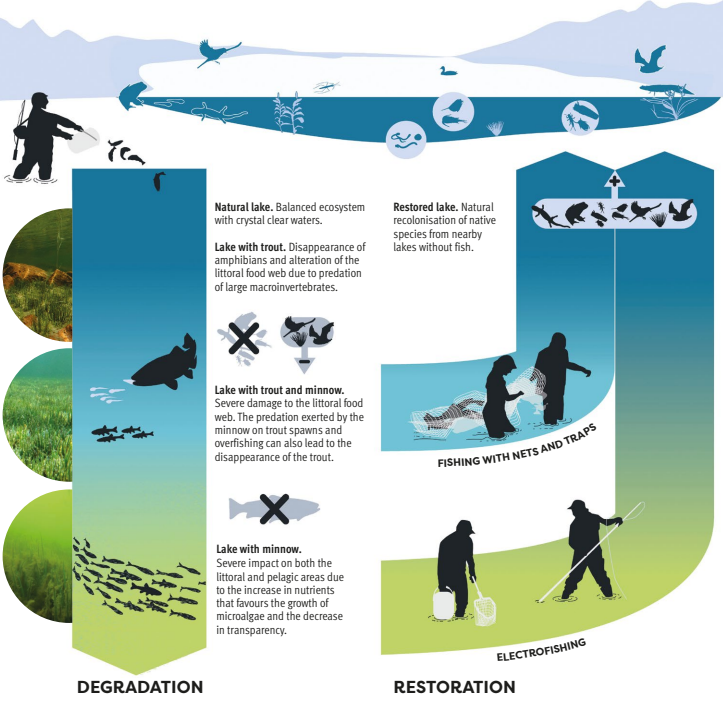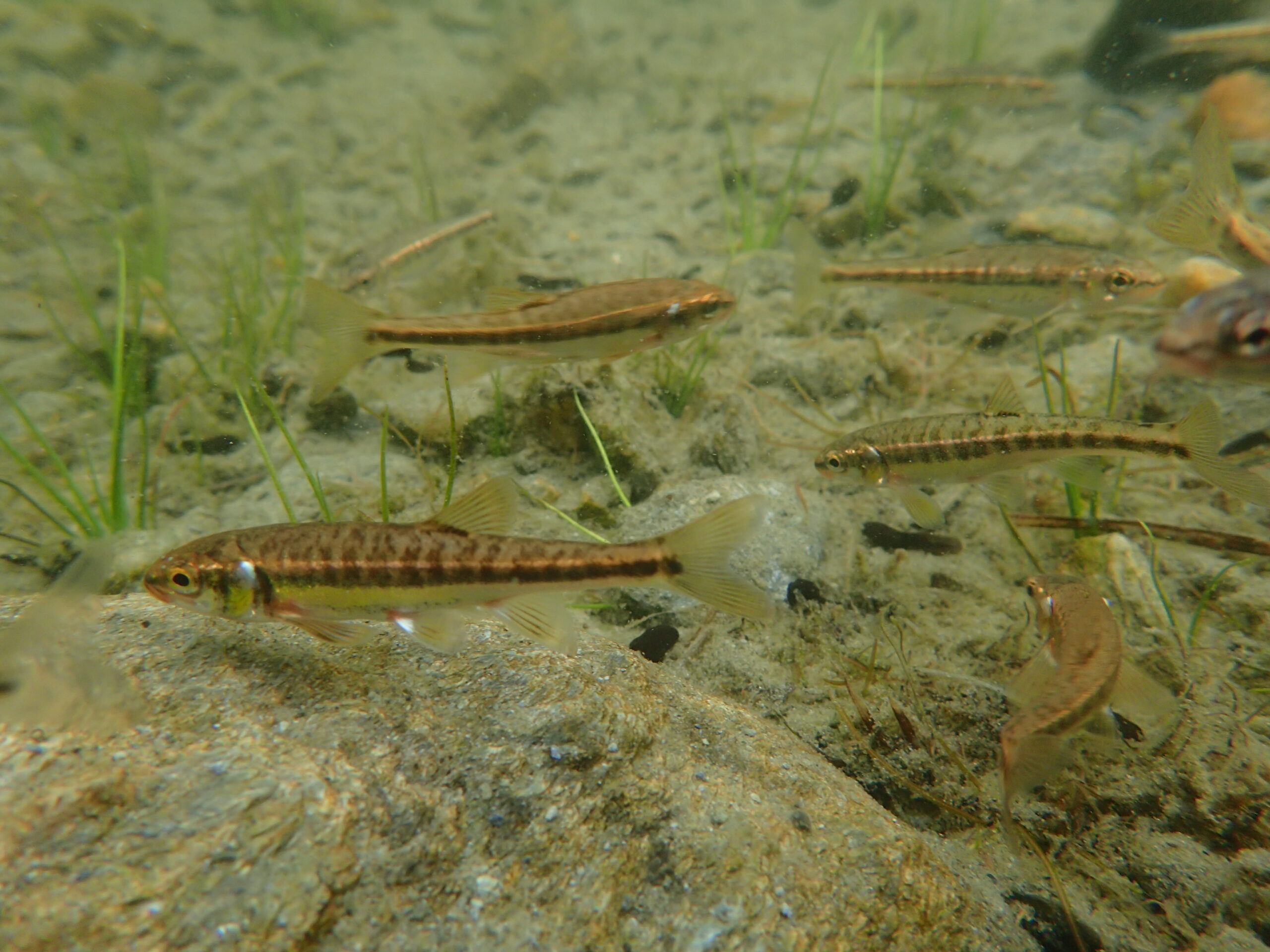High mountain lakes, often isolated from the rivers below by physical barriers, have prevented fish from naturally colonizing them. However, we find fish in a substantial number of lakes as a result of a historical process of introduction.
These fish, in addition to being non-native species, are considered invasive because they have a negative impact on the natural ecosystems of these environments.
Fishing in high mountain lakes
In the Pyrenees, the introduction of fish was carried out historically, initially for self-consumption and trade, using native trout from nearby rivers, always in limited lakes. In the Alps, some introductions date back to the medieval period. However, it wasn’t until the second half of the 20th century that the practice of introducing fish became widespread, especially with the popularization of recreational fishing.
Recreational fishing with live bait has led to the introduction, since the end of the 20th century, of the common minnow, a small cyprinid that negatively affects trout, both in the Pyrenees and in the Alps.
Ecological effects of fish introduction
The proliferation of fish in these lakes has had negative consequences on the native fauna, has affected the structure and balance of the entire ecosystem and altered its trophic food web. Furthermore, the consequences of this impact can also affect terrestrial fauna populations, such as birds, bats, and small mammals like the shrew, which depend on aquatic insects as a food source.
In a natural lake without fish, the ecosystem remains balanced: the water is crystal clear, and the food web functions without alterations. However, when species like trout are introduced, other amphibian species begin to disappear, and significant alterations occur in the food web of the littoral zone, where fish dominate over larger macroinvertebrates.
The ecological impact becomes more severe when, in addition to trout, the minnow is also introduced. This cyprinid species, which has been used as live bait for recreational fishing, causes aggressive predation on trout nests and overfishing, which may lead to the disappearance of this species. This significantly alters the food web of the lake.
In lakes where only the minnow is found, the impact not only affects the littoral zone but also alters the pelagic zone, due to the increase in nutrients that promote the growth of microalgae and cause a decrease in water transparency.





